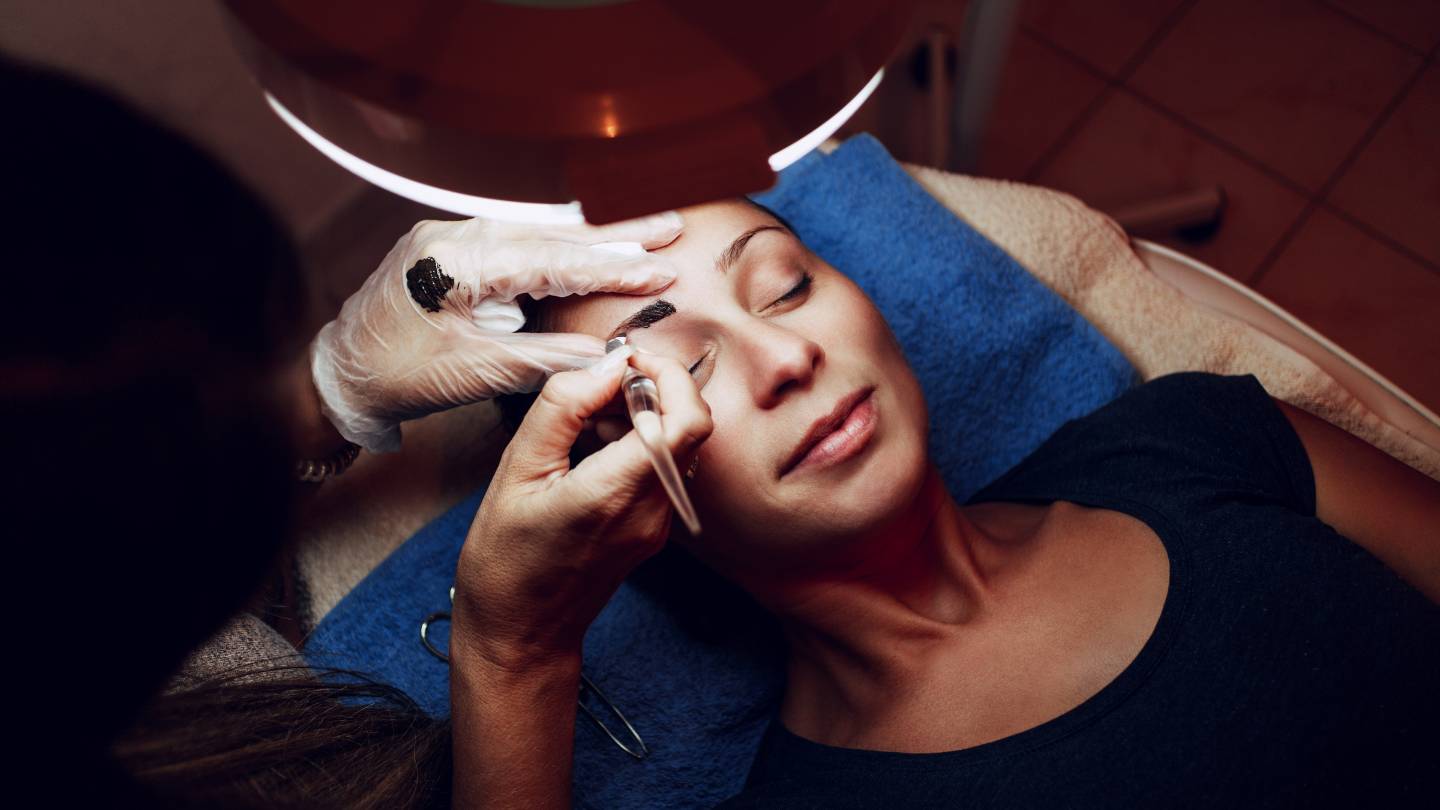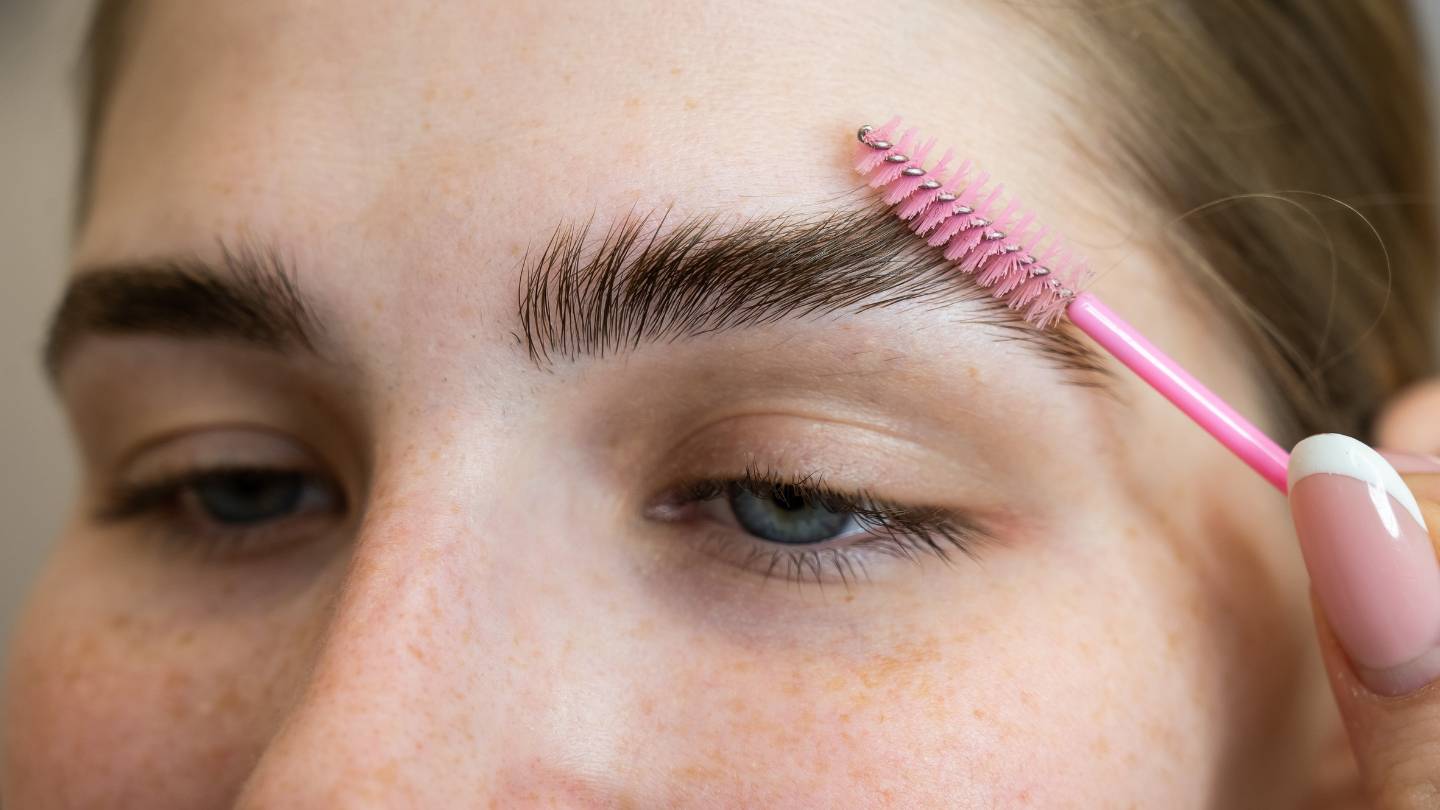Eyebrow feathering, known as microblading, has become a semi-permanent solution for achieving fuller, more defined brows. However, like any cosmetic procedure, it has potential risks and side effects.
This blog will cover the common risks associated with eyebrow feathering and offer insights into how to minimise these issues for a safe and successful experience.
Let’s get straight to the point
Eyebrow feathering, or microblading, is a semi-permanent cosmetic procedure to achieve fuller brows, but it carries risks such as infection, allergic reactions, scarring, uneven results, and pigment fading.
These risks can be minimised by selecting a qualified technician, ensuring proper hygiene, performing a patch test, following aftercare instructions, and considering skin type. Potential complications like infections, prolonged swelling, or scarring can occur.
Proper aftercare, including keeping the area clean, avoiding sun exposure, and not picking scabs, is essential for successful healing and minimising adverse effects.
Common Risks Of Eyebrow Feathering
While eyebrow feathering can provide beautiful, natural-looking results, it is important to be aware of the following risks:
- Infection: One of the most significant risks of eyebrow feathering is infection. This can occur if proper hygiene and sterilisation practices are not followed during the procedure.Open skin can become a breeding ground for bacteria, leading to infection if not cared for properly.
- Allergic Reactions: Some individuals may experience allergic reactions to the pigments used during the procedure. This could manifest as redness, swelling, itching, or scabbing in the treated area. It is important to have a patch test done before the procedure to ensure you are not allergic to the pigments.
- Uneven Results: As eyebrow feathering involves manual work, uneven or asymmetrical results are possible, particularly if the technician needs more experience or skill. Even minor inconsistencies can result in noticeable differences in the appearance of your brows.
- Pigment Fading: The pigment used in eyebrow feathering can fade over time. This fading is natural, but how quickly it happens can depend on skin type, sun exposure, and aftercare factors. Oily skin types may experience faster fading than others.
- Scarring: In some cases, eyebrow feathering can lead to scarring. This occurs when the microblade tool cuts too deep into the skin. Scar tissue may develop, resulting in raised or uneven skin texture, which can affect the appearance of the brows.
Ways To Minimise The Risks Of Eyebrow Feathering
However, risks can be significantly reduced by taking certain precautions before and after the procedure. Here’s how to minimise potential issues:
1. Choose A Qualified Technician
One of the most important factors in achieving safe and successful results is choosing a qualified and experienced technician. Ensure the technician is certified and has received proper training in eyebrow feathering.
Checking reviews, credentials, and examples of their previous work can help you make an informed decision.
2. Ensure Proper Hygiene And Sterilisation
Ensure that your technician follows strict hygiene practices to minimise the risk of infection. The tools used during the procedure should be sterilised, and disposable tools should be used where possible.
Make sure the salon follows cleanliness standards and uses single-use, sterile equipment.
3. Get A Patch Test
A patch test is essential for identifying potential allergic reactions to the pigments. This simple test involves applying a small amount of pigment to your skin, typically behind your ear or on your arm.
If there is no reaction after 24 to 48 hours, you are less likely to experience an allergic response during the procedure.
4. Follow Aftercare Instructions
Aftercare is vital for the success of the procedure and to avoid complications. Your technician will provide specific instructions for caring for your brows after feathering.
These may include keeping the area dry, avoiding excessive sun exposure, and refraining from using certain skincare products. It is important to follow these guidelines closely to ensure proper healing and prevent infections.
5. Be Aware Of Skin Type Limitations
Different skin types can react differently to eyebrow feathering. For example, individuals with oily skin may experience faster pigment fading.
Dry skin generally holds the pigment better, leading to longer-lasting results. Your technician should assess your skin type before the procedure and discuss how it may impact the outcome.
Signs Of Complications
Despite taking precautions, complications can still occur. It’s important to know the signs of potential problems following the procedure.
1. Infection Symptoms
Infections can develop if the treated area is exposed to bacteria. Signs of infection include severe redness, swelling, heat, pus, and pain around the eyebrows.
If you experience these symptoms, seek medical attention immediately, as untreated infections can lead to more serious complications.
2. Allergic Reaction
If you notice swelling, redness, itching, or burning after the procedure, it could indicate an allergic reaction. Sometimes, the body may reject the pigment, causing the ink to “expel” from the skin, leaving patchy or faded areas.
If you suspect an allergic reaction, consult a doctor immediately.
3. Prolonged Scabbing Or Swelling
While some scabbing and swelling are normal in the days following the procedure, prolonged or excessive symptoms could indicate a problem. If the scabs do not fall off naturally within two weeks or swelling persists, you may need medical advice.
Potential Scarring From Eyebrow Feathering
One of the more concerning risks of eyebrow feathering is the potential for scarring. Scars can develop when the microblade penetrates too deeply into the skin.
Overworked skin can also lead to rough and textured areas, which may be difficult to correct later.
How To Avoid Scarring?
To minimise the risk of scarring, ensure your technician has the proper experience and skills. The microblade should only create superficial cuts, depositing the pigment into the upper layers of the skin.
Overworking the skin or creating cuts too deep increases the risk of long-term damage and scarring.
Eyebrow Feathering And Skin Conditions
Certain individuals are more prone to complications from eyebrow feathering. If you are one of them, it’s recommended that you avoid the procedure.
- Have a history of keloid scarring.
- Are you pregnant or breastfeeding?
- Have an organ transplant.
- Suffer from conditions like hepatitis or a weakened immune system.
These conditions can increase the risk of adverse reactions and may affect healing.
Aftercare: Essential Steps For Recovery
Proper aftercare is key to ensuring a successful outcome from eyebrow feathering. Following the aftercare instructions provided by your technician can help prevent complications and ensure the best possible results.
1. Keep The Area Clean And Dry
In the days following the procedure, keep the treated area clean and dry. Avoid sweating, swimming, and prolonged exposure to water. Use a clean cotton pad or Q-tip to gently cleanse the area with water and apply any recommended ointment to protect the skin.
2. Avoid Skincare Products
Certain skincare products can interfere with the healing process or irritate. Avoid using products containing acids, retinol, or exfoliating agents near your brows for at least two weeks after the procedure.
3. Avoid Sun Exposure
Direct sunlight can cause the pigment to fade quickly, leading to uneven results. As your technician advises, protect your brows by wearing a hat or sunscreen, but only after the initial healing period.
4. Don’t Pick Or Scratch
It’s common to experience scabbing as your skin heals but avoid picking or scratching the area. Let the scabs fall off naturally to prevent disrupting the healing process and potentially causing scarring.
Conclusion
Eyebrow feathering can provide stunning, semi-permanent results, but it’s important to be aware of the risks involved. The main risks include infection, allergic reactions, scarring, and uneven results.
These risks can be minimised by choosing a qualified technician, following proper aftercare instructions, and knowing how your skin type may affect the outcome.
For those who carefully research their options and take the necessary precautions, eyebrow feathering can be a safe and effective way to achieve fuller, more defined brows.
Always prioritise your safety and health by being informed about the procedure and its potential complications.
FAQs About Eyebrow Feathering
What Factors Contribute To Increased Risks During Eyebrow Feathering?
Factors such as a compromised immune system, certain medical conditions, and poor aftercare can heighten the risks of complications.
Can Eyebrow Feathering Affect The Results Of Future Mri Scans?
Properly performed Eyebrow Feathering should not affect MRI scans. However, informing the technician about any cosmetic procedures before undergoing an MRI is advisable.
Is It Possible For The Pigment To Migrate After Eyebrow Feathering?
While rare, pigment migration can occur if the pigment is not implanted correctly. This may cause a blurred or uneven appearance.
Are There Age Restrictions For Eyebrow Feathering?
While there’s no strict age limit, it’s recommended for individuals over 18 with fully developed brows and realistic expectations.
Can Eyebrow Feathering Be Corrected If Someone Is Unhappy With The Results?
Corrections or touch-ups are possible, but they might require additional procedures and should be discussed with the original technician or another.



